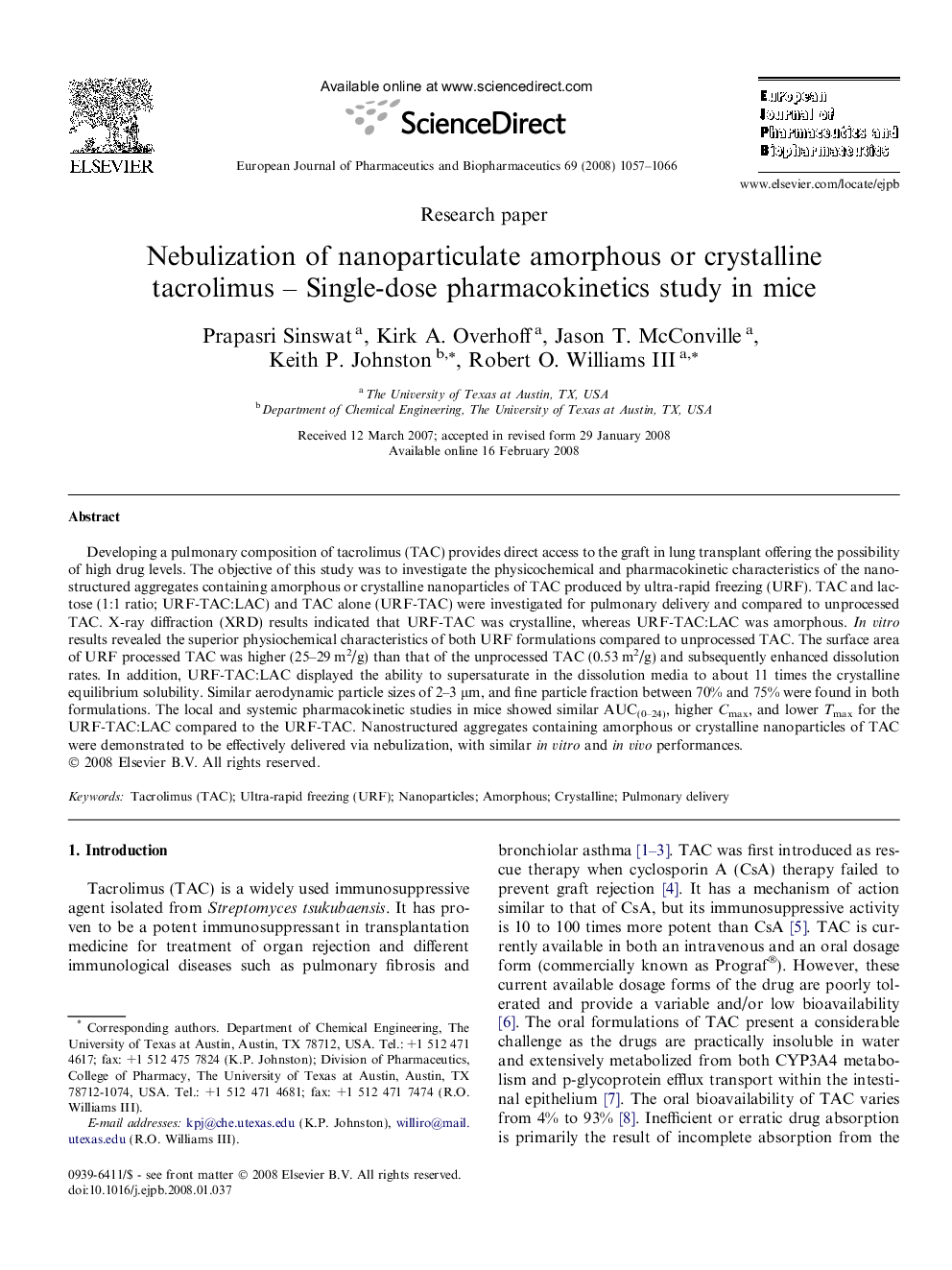| Article ID | Journal | Published Year | Pages | File Type |
|---|---|---|---|---|
| 2084620 | European Journal of Pharmaceutics and Biopharmaceutics | 2008 | 10 Pages |
Developing a pulmonary composition of tacrolimus (TAC) provides direct access to the graft in lung transplant offering the possibility of high drug levels. The objective of this study was to investigate the physicochemical and pharmacokinetic characteristics of the nanostructured aggregates containing amorphous or crystalline nanoparticles of TAC produced by ultra-rapid freezing (URF). TAC and lactose (1:1 ratio; URF-TAC:LAC) and TAC alone (URF-TAC) were investigated for pulmonary delivery and compared to unprocessed TAC. X-ray diffraction (XRD) results indicated that URF-TAC was crystalline, whereas URF-TAC:LAC was amorphous. In vitro results revealed the superior physiochemical characteristics of both URF formulations compared to unprocessed TAC. The surface area of URF processed TAC was higher (25–29 m2/g) than that of the unprocessed TAC (0.53 m2/g) and subsequently enhanced dissolution rates. In addition, URF-TAC:LAC displayed the ability to supersaturate in the dissolution media to about 11 times the crystalline equilibrium solubility. Similar aerodynamic particle sizes of 2–3 μm, and fine particle fraction between 70% and 75% were found in both formulations. The local and systemic pharmacokinetic studies in mice showed similar AUC(0–24), higher Cmax, and lower Tmax for the URF-TAC:LAC compared to the URF-TAC. Nanostructured aggregates containing amorphous or crystalline nanoparticles of TAC were demonstrated to be effectively delivered via nebulization, with similar in vitro and in vivo performances.
